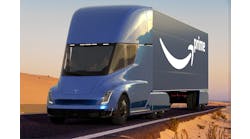Spent an interesting few days in San Diego this week getting a detailed look at Nissan’s NV200 compact cargo van and the new 2014 Versa Note compact car as well. On the surface, the two vehicles might seem to have little in common. Yet after giving both a good going over, I found they share (to a degree) what’s becoming something of a byword in the commercial vehicle space: versatility.
A good example of said versatility can be found in the video below, which provides a quick overview of an NV200 customized to serve as a “surfboard delivery vehicle” for Shaper Studios; a firm founded to teach surfers how to make their own surf boards, right down to the painting of their own designs.
Such van “versatility” is what Peter Bedrosian, a senior manager of product planning for Nissan, believes is one of the keys to success in the light commercial vehicle market segment – especially where vans are concerned.
He delved into that aspect of the commercial vehicle business as part of an overview of the NV200 (see below), which has been on sale for two months now.
Yet versatility must also be paired with two other attributes in order for a vehicle to succeed in the market these days, noted John Curl, another of Nissan’s senior managers for product planning: maximum fuel economy and low cost.
The drive to improve fuel economy in particular is leading OEMs like Nissan to take a fresh look at all aspects of vehicle design, especially aerodynamics. Take a look below at Curl’s overview of the aerodynamic elements of the new 2014 Versa Note as an example – in particular how even the taillights got revamped in order to help reduce the compact car’s aerodynamic drag.
Another piece of the fuel economy puzzle rests in transmission design, which Nissan is addressing via what it calls a “next generation” version of its continuously variable transmission or CVT that’s lighter and more efficient, yet offers wider gear ratios for better fuel efficiency through the shift points:
It’s all part of leaving no stone unturned to find ways of making vehicles – even those serving in the commercial world – as fuel efficient, functional, and low cost as possible.


